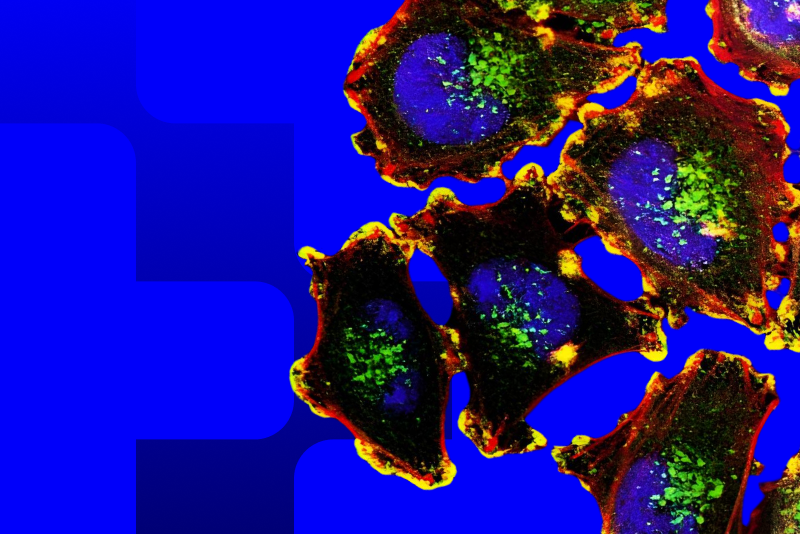BICO News Feed
- January 15, 2025
- 12:58 pm
Automation in Cell-based Assays: Benefits for High-throughput and Consistent Results
Applications of Cell-based Assays
High-throughput Screening
Drug discovery efforts rely on screening large compound libraries quickly and accurately in cellular systems. Cell-based assays in this context often include specific reporter assays that detect and measure a compound’s ability to bind a molecular target and elicit the desired effect, such as inhibition of enzyme activity (Best et al., 2024).
Functional Genomics
Functional genomics assays aim to determine how various genetic modifications, such as gene knockdown or knockout, affect cellular functions. CRISPR screening assays are a specific type of cell-based assay that introduce these genetic changes into cells and measure particular outcomes (Zhou et al., 2014). These outcomes can include cell proliferation, viability, and specific molecular signals detected using reporter cells.
Toxicology
Toxicology is a critical parameter assessed during therapy development. Performing cell-based toxicology screening is vital for evaluating drug safety, identifying potential cytotoxicities, and ensuring the efficacy of compounds while minimizing adverse effects (Szymański et al., 2012). Accurate toxicology studies using cell-based assays help to ensure that only safe and effective therapies are brought forward for further clinical evaluation.
Emerging Technologies
Technological advancements continuously enhance high-throughput cell-based assays, enabling researchers to gain deeper insights into cell behavior under various conditions.
High-content Screening
High-content screening involves using multiple analytical methods simultaneously to monitor cells and obtain comprehensive insights from a single experiment (Nierode et al., 2016). This approach can include toxicology, genomic screening, and cytotoxicity assays, as well as imaging of cellular structures, quantifying subcellular features, tracking dynamic processes like cell migration and signaling, and analyzing complex phenotypic changes in high resolution (Fig. 1).

Single-cell Analysis
The analysis of single cells allows for the characterization of important but less abundant cell types without their impact being drowned out by noise from other cells. It helps reveal rare subpopulations from complex mixtures and elucidates specific mechanisms of gene expression and molecular signaling (Sagar et al., 2018).
Microfluidics
Microfluidics allows cell-based assays to be performed at incredibly small scales (Duncombe et al., 2015). This decreases the volume required for expensive reagents such as cell culture media, test compounds, and gene-editing tools like CRISPR.
Organ-on-Chip
Related to advances in microfluidics is the concept of organ-on-chip. Organ-on-chip technology involves culturing living cells in micro-engineered devices that replicate the structure and function of human organs. These systems mimic organ-level processes like blood flow and nutrient delivery, enabling precise drug testing, disease modeling, and toxicity assessments (Ingber, 2022).
Challenges
Cell-based assays can be affected by many variables that prevent researchers from deriving meaningful and accurate results.
Cell Detachment
Cell-based assays often require multiple washing steps or media changes, repeatedly exposing cells to forces that may cause them to detach from the test plate. This detachment can cause cellular stress death, and a reduction in signal that is unrelated to the intended test conditions, leading to confounding and misleading results.
Variability Due to Manual Pipetting
Manual pipetting methods for cell-based assays can introduce variability in several ways (Lippi et al., 2017). They increase the chances of incorrect dispensing, leading to the wrong reagents being added to wells. Furthermore, incomplete or inefficient washing due to manual pipetting can mean that some cells are exposed to test compounds longer than others, generating misleading results.
Cross Contamination
Cross-contamination is particularly problematic when screening using high-throughput cell-based assays, as it can mean that different compounds or concentrations are inappropriately mixed or added to the wrong wells. The more conditions used, the greater the chances of cross-contamination.
High Background Noise
Background noise makes it difficult for researchers to distinguish the test signal from signals caused by contaminants or leftover reagents. This issue often arises from insufficient removal of reagents during washing steps.
Automation
Automation is a crucial development for cell-based assays, facilitating faster and more accurate experimentation while relieving researchers of repetitive and tedious tasks. It enables the scaling down of cell-based assays, reducing costs associated with expensive reagents like cell culture media, multiwell plates, and test compounds.
Automation allows researchers to repeat precise experimental conditions without introducing operator variables. This means more robust and trustworthy results and significantly reduces the need for repeat experiments (Holland & Davies, 2020). Ultimately, cell-based assay automation enhances efficiency, consistency, and cost-effectiveness, enabling researchers to focus on data analysis and innovation while minimizing errors and wasted resources.
The C.WASH PLUS from CYTENA has emerged as an essential tool for various applications, including cell-based assays. Poor washing can compromise the success of cell-based assays. The C.WASH PLUS ensures <0.1 μL residual volume per well for 96-, 384- and 1536-well plate formats, and its gentle evacuation steps virtually eliminate cell detachment issues (Fig. 2).

Conclusions and Future Directions
Automation is transforming cell-based assays by enhancing accuracy, reproducibility, and scalability, ultimately accelerating research and drug discovery. As technology advances, we anticipate more integrated automated systems incorporating artificial intelligence for data analysis and decision-making. Future innovations will further reduce costs and reagent usage while increasing assay throughput and facilitating greater complexity. Continued advancements in automation will empower researchers to explore deeper biological insights, streamline workflows, and develop more effective therapies, driving the next wave of breakthroughs in biomedicine.
Contact CYTENA today to learn how the C.WASH PLUS can fit seamlessly into your existing cell-based assay workflow, offering next-level accuracy and efficiency.
References
- Best, A. J., Braunschweig, U., Wu, M., Farhangmehr, S., Pasculescu, A., Lim, J. J., Comsa, L. C., Jen, M., Wang, J., Datti, A., Wrana, J. L., Cordes, S. P., Al-awar, R., Han, H., & Blencowe, B. J. (2024). High-throughput sensitive screening of small molecule modulators of microexon alternative splicing using dual Nano and Firefly luciferase reporters. Nature Communications, 15(1), 6328.
- Duncombe, T. A., Tentori, A. M., & Herr, A. E. (2015). Microfluidics: Reframing biological enquiry. Nature Reviews. Molecular Cell Biology, 16(9), 554–567.
- Holland, I., & Davies, J. A. (2020). Automation in the Life Science Research Laboratory. Front Bioeng Biotechnol, 8(571777).
- Ingber, D. E. (2022). Human organs-on-chips for disease modelling, drug development and personalized medicine. Nature Reviews Genetics, 23(8), 467–491.
- Lippi, G., Lima-Oliveira, G., Brocco, G., Bassi, A., & Salvagno, G. L. (2017). Estimating the intra- and inter-individual imprecision of manual pipetting. Clinical Chemistry and Laboratory Medicine (CCLM), 55(7).
- Nierode, G., Kwon, P. S., Dordick, J. S., & Kwon, S.-J. (2016). Cell-Based Assay Design for High-Content Screening of Drug Candidates. Journal of Microbiology and Biotechnology, 26(2), 213–225.
- Szymański, P., Markowicz, M., & Mikiciuk-Olasik, E. (2012). Adaptation of high-throughput screening in drug discovery-toxicological screening tests. International Journal of Molecular Sciences, 13(1), 427–452.
- Zhou, Y., Zhu, S., Cai, C., Yuan, P., Li, C., Huang, Y., & Wei, W. (2014). High-throughput screening of a CRISPR/Cas9 library for functional genomics in human cells. Nature, 509(7501), 487–491.
Stay updated
Get the latest first.



